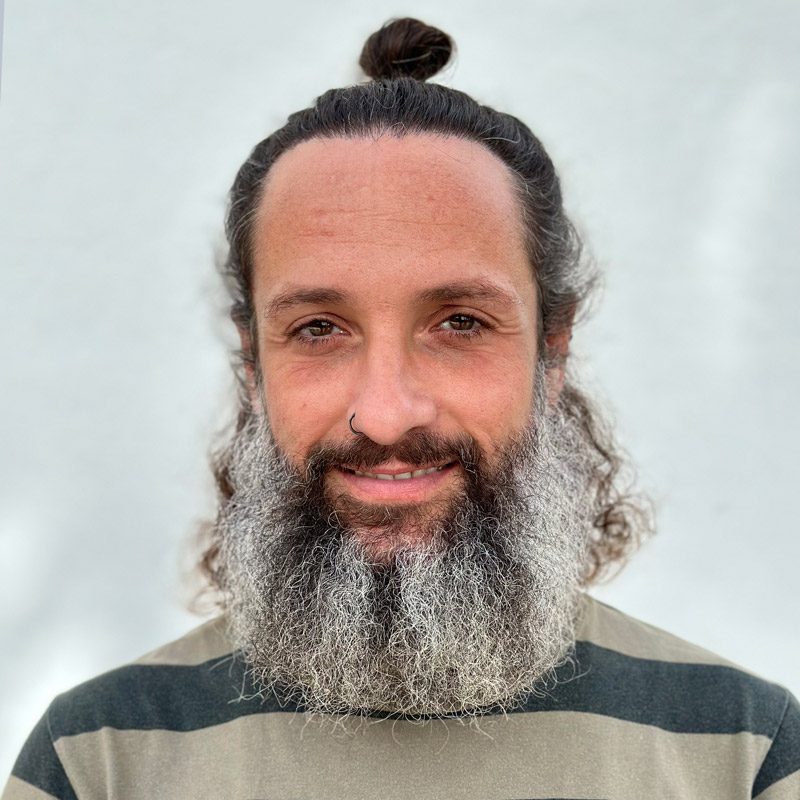The Dimba tribe of Angola is a livestock society that mainly inhabits the savannah on the outskirts of the town of Cahama. Also, they practice hunting and subsistence agriculture. Currently, they usually cultivate the lands of the Himba and liven up their festivals with songs, being their successors in terms of social rank in the area. Their towns are characterized by being surrounded by robust palisades and having houses decorated with colorful geometric patterns. Despite the Christianization of the area, women still preserve a fascinating hairstyle culture, wearing different and amazing styles for every occasion and stage of life.
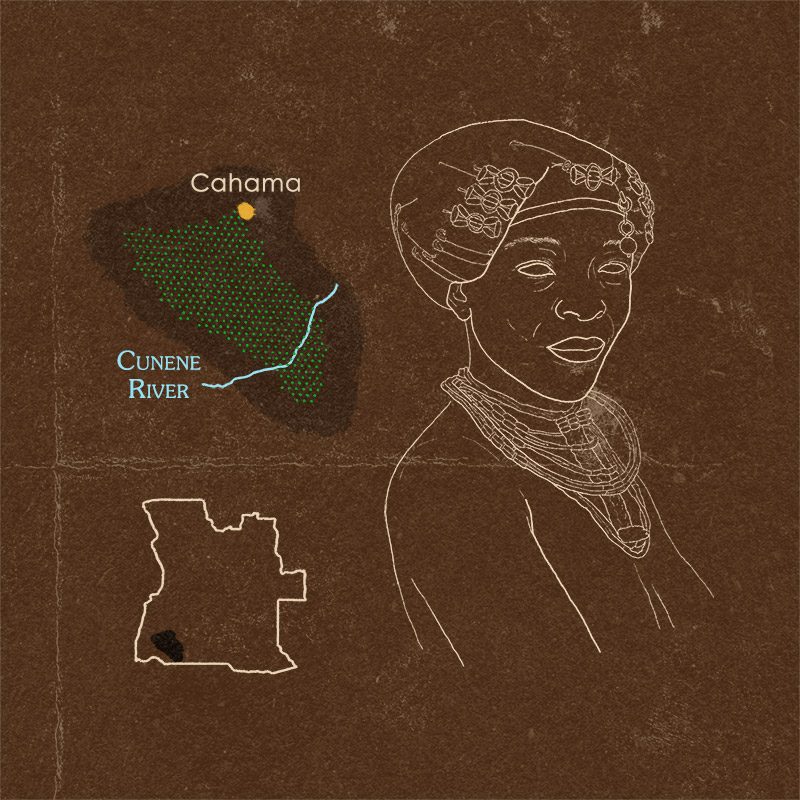
Location of the Dimba tribe in the territory of Angola.
Population and ecosystem of the Dimba tribe of Angola
15,000 Dimba live between the wooded savannah east of Cahama and the dry and rocky valleys and hills that end in Cunene River.
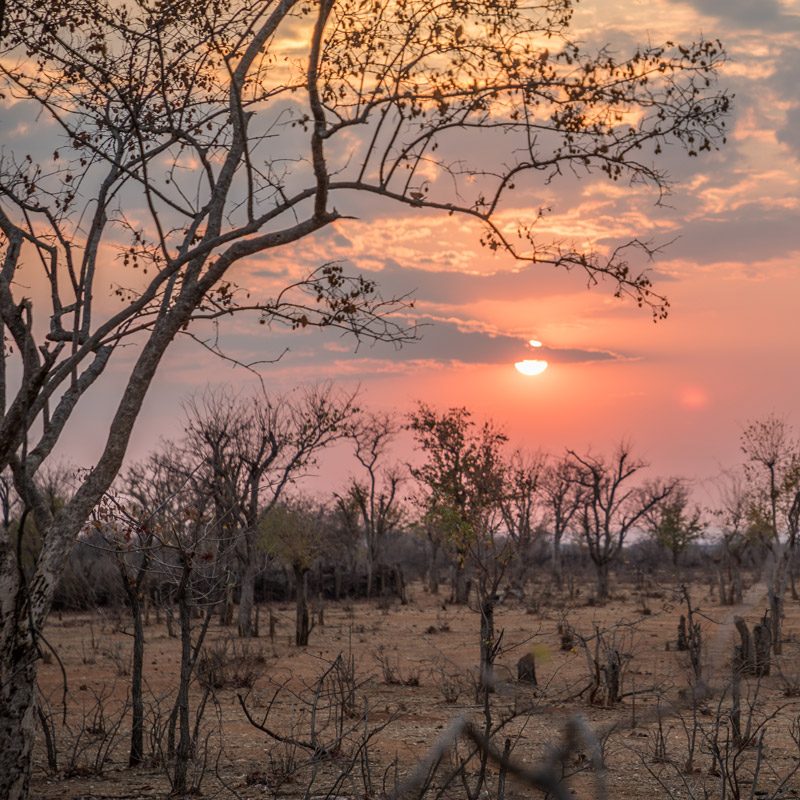
Landscape of the savanna inhabited by the Dimba tribe in southwestern Angola.
Dimba economy and social organization
Dimba people are cattle herders and also practice hunting and subsistence agriculture. Dimba women still build and use baskets with many interesting geometric patterns. They live under a clan-based tribal structure led by the eldest male.
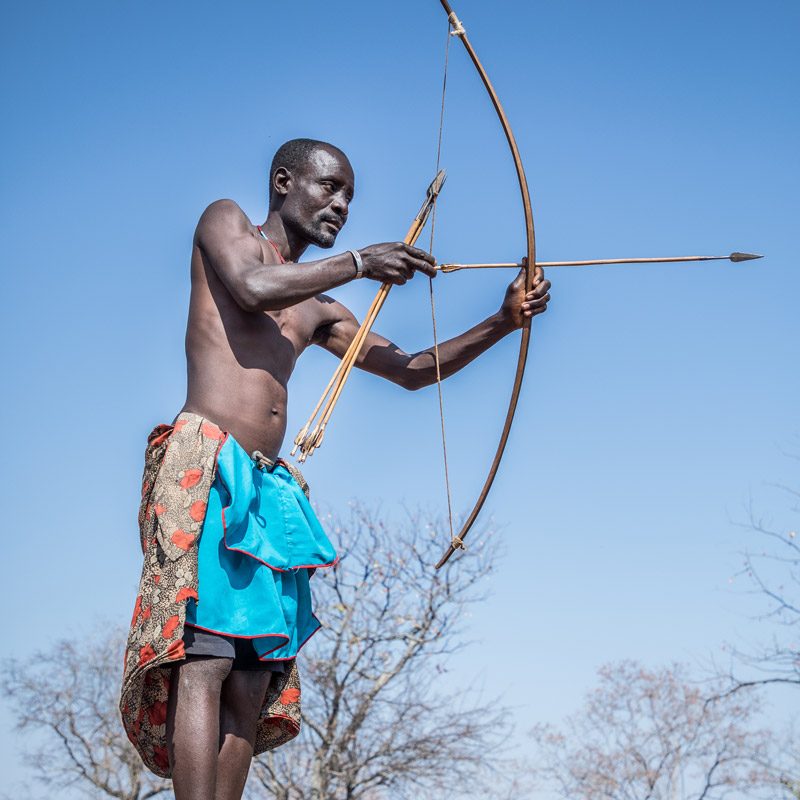
Dimba hunter.
Do you want to meet the Dimba tribe of Angola?
Join us on our next trip to Angola from 6 to 17 of April 2024 to meet the Dimba tribe of Angola. Click here to discover more details about the trip to Angola in April 2024.
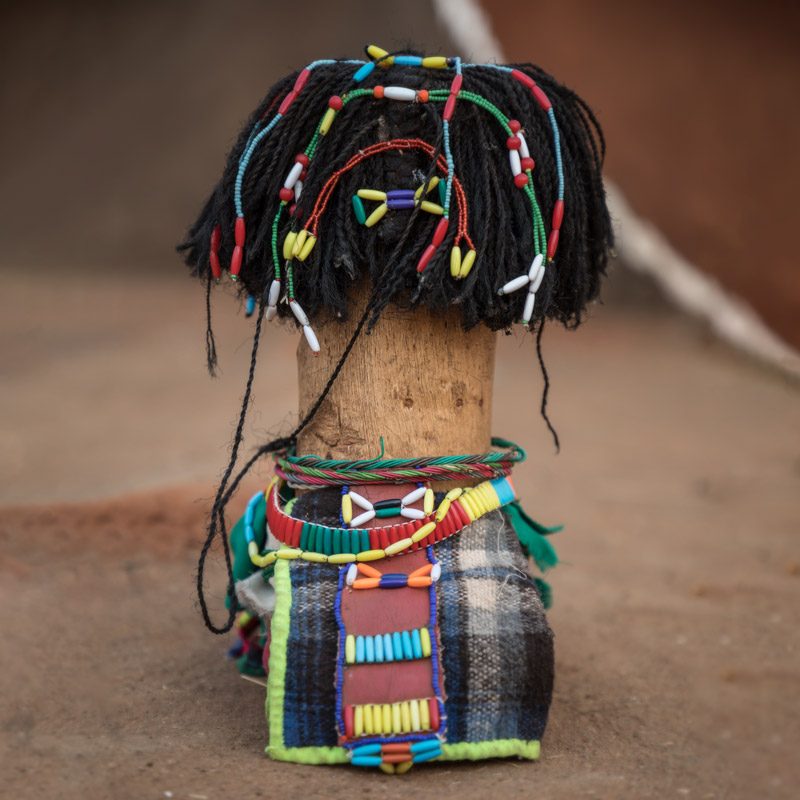
Traditional doll from the Dimba tribe of Angola with belts of vegetable fibers and beads and braids made with natural or artificial hair.
Dimba art and architecture
Dimba women make beautiful dolls for their young daughters to play with. These dolls are often lavishly decorated with vegetable cords and braids covered with colored glass or plastic beads.
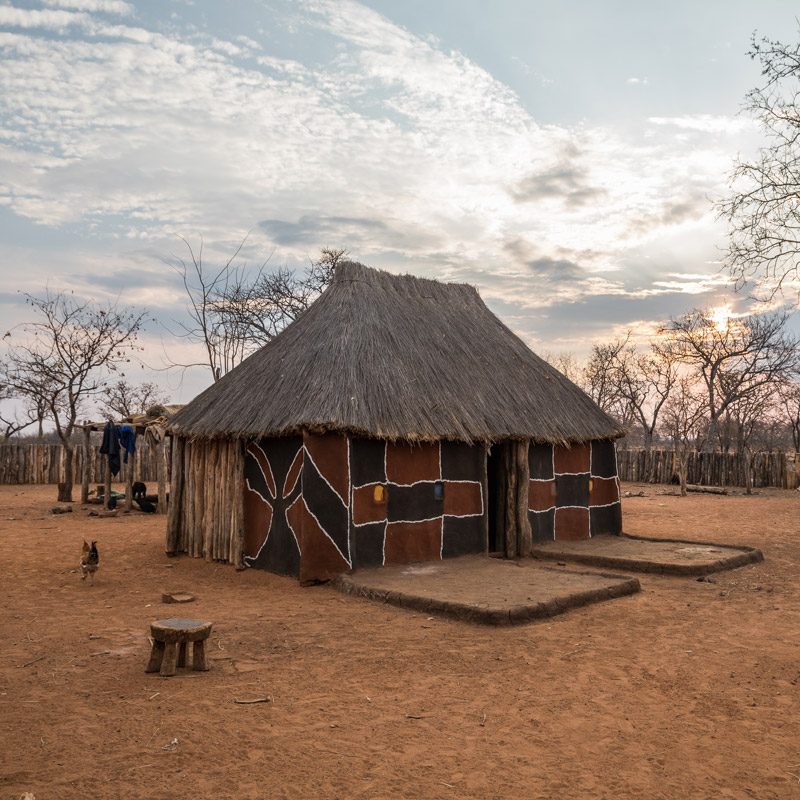
Like good craftsmen, the Dimba decorate the facades of their homes with geometric patterns. The dominant colors for these drawings are white, black and red; which they obtain from clays found in riverbeds. Their decorated houses are rectangular, spaciously distributed over a wide area and surrounded by a palisade of thick logs.
Their esparto granaries where the seeds are stored are the largest ones in Angola.
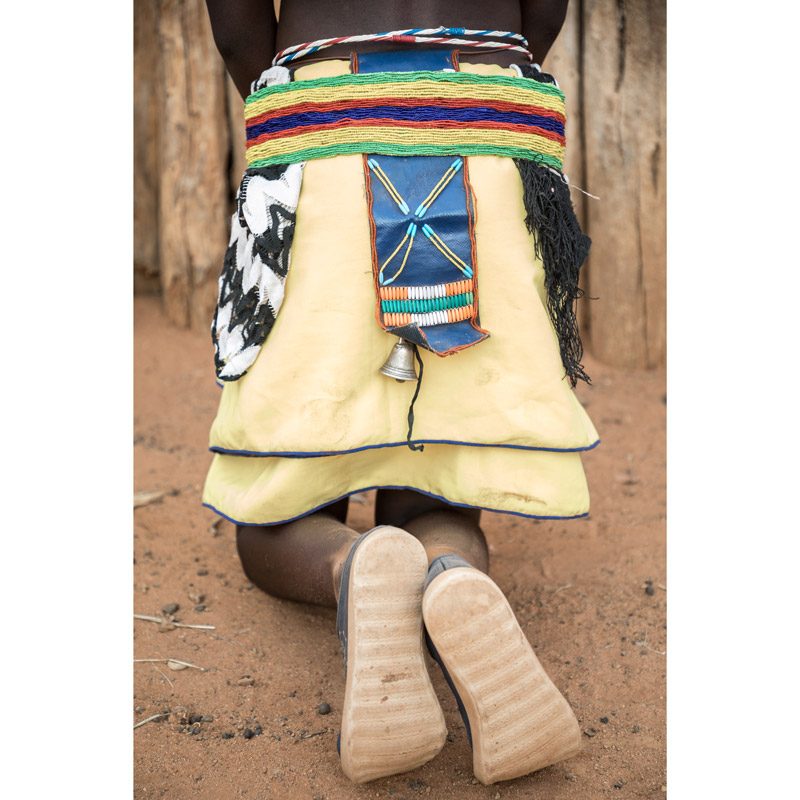
Dimba women still build and use utensils made of vegetable fiber with many interesting geometric concepts. For example, truncated conical and cylindrical shapes, spirals, various geometric figures, complex patterns, transformations in the plane and friezes. These extraordinary mathematical practices applied to the construction of the baskets have aroused interest from the point of view of ethnomathematical studies.
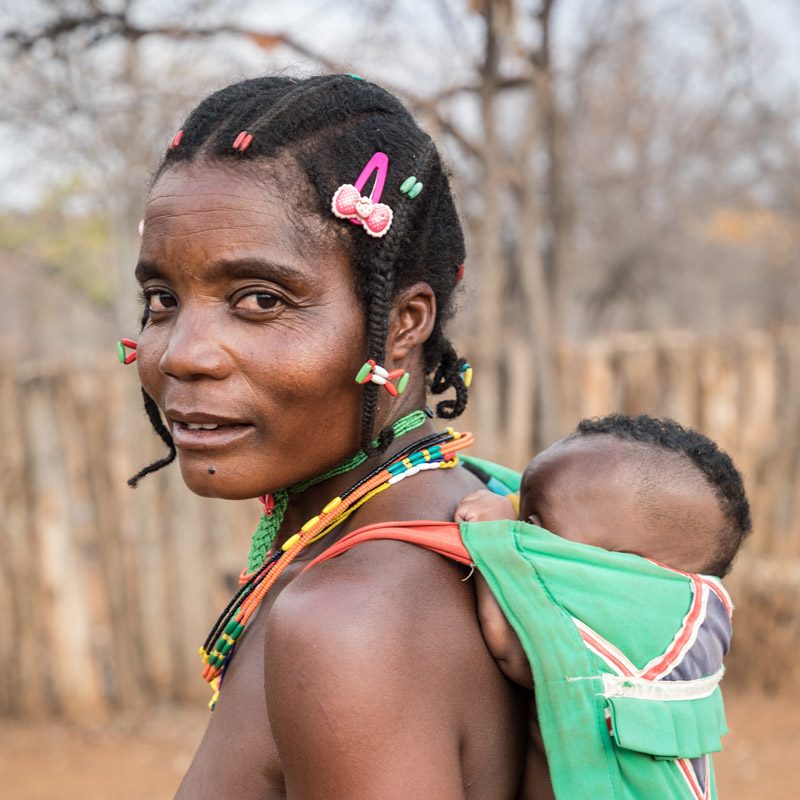
Dimba woman with traditional "three crest" hairstyle.
Aesthetics and belief system of the Dimba tribe of Angola
Dimba married women have two different styles of hairdo: the “afro” style -normally seen in older women or mothers with babies- and the “three crest” style, less impressive than the “afro” style. Dimba girls wear beaded wigs (sometimes covering their faces) for wedding celebrations which means they have had their first periods but are not ready for marriage.
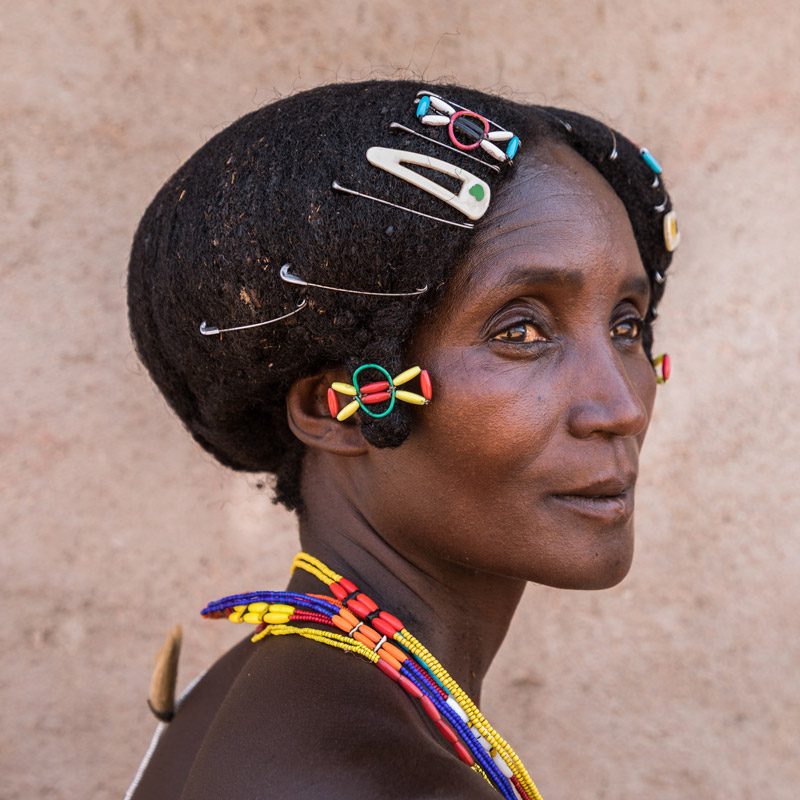
Woman from the Dimba tribe of Angola with a traditional "afro" hairstyle.
Dimba are becoming influenced by neighboring Humbi and Gambue tribes and are increasingly converting to Christianity. Despite this tendency, in small villages traditional bull and ancestors’ worship is still widely practiced.
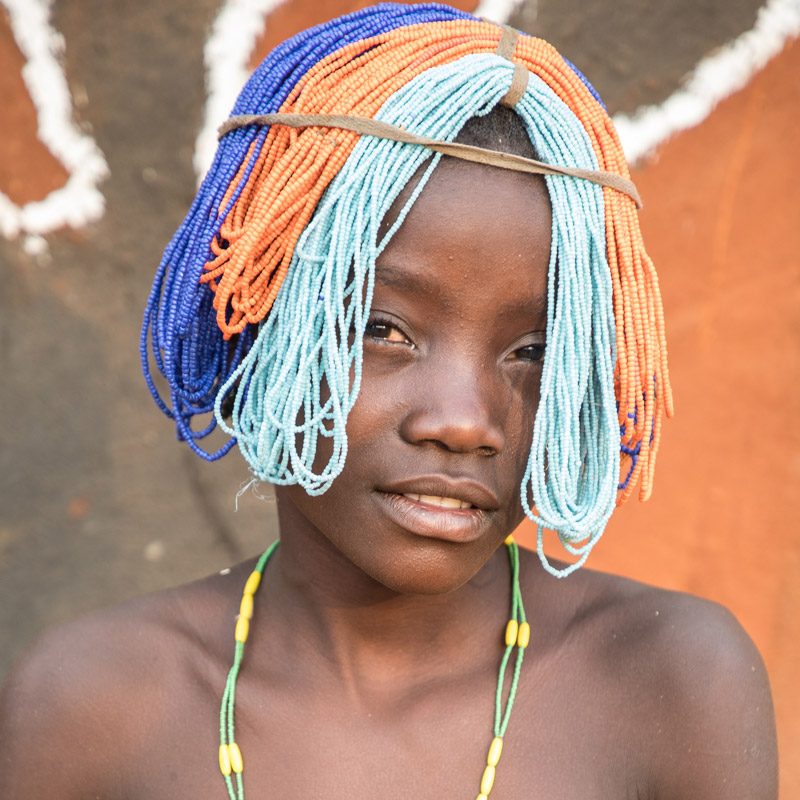
Young dimba with beaded wig.
Challenges of the Dimba tribe
The Dimba are the cattle herding group closest to paved roads and to the most westernized ethnic groups of southwestern Angola, like the Humbi. The aggressive pressure of missionaries, schooling, European clothing and the emigration of young people to Namibia are undoubtedly the greatest challenges which Dimba people face today. Finally, drought has become a constant threat to this grass-dependent livestock society. Improving irrigation systems in their fields and incorporating cultural tourism as a source of economic resource could be valid responses to these future challenges.
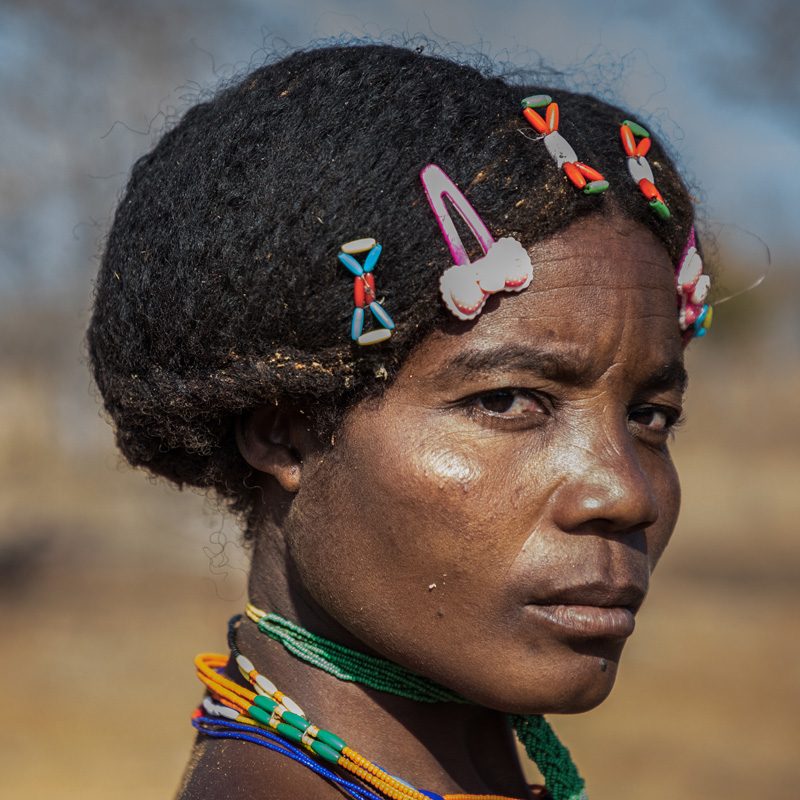
Discover the tribes of Angola with the book 'Last Tribes of Angola'
If you want to know more about the tribes of Angola, the book 'Last tribes of Angola' is available for sale. It is the result of the joint work of the anthropologist Joan Riera and the ethno-photographer Aníbal Bueno. Written in both English and Spanish (a bilingual edition) and enriched with a wealth of photographs, illustrations, and maps, the book is a unique visual guide to the most remote tribes of southwestern Angola.
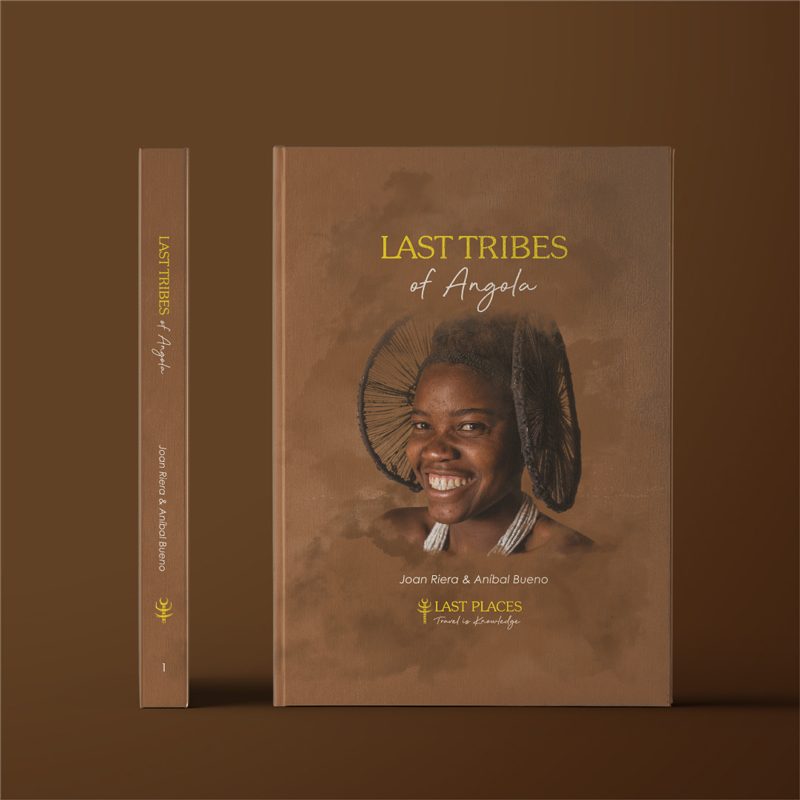
Do you want to buy the book 'Last Tribes of Angola'?
► For shipments to the Iberian Peninsula and Islands, you can buy the book in the Exlibric online store. Click here to buy it.
► For shipments to the rest of the world, you can buy the book on Amazon. Click here to buy it.
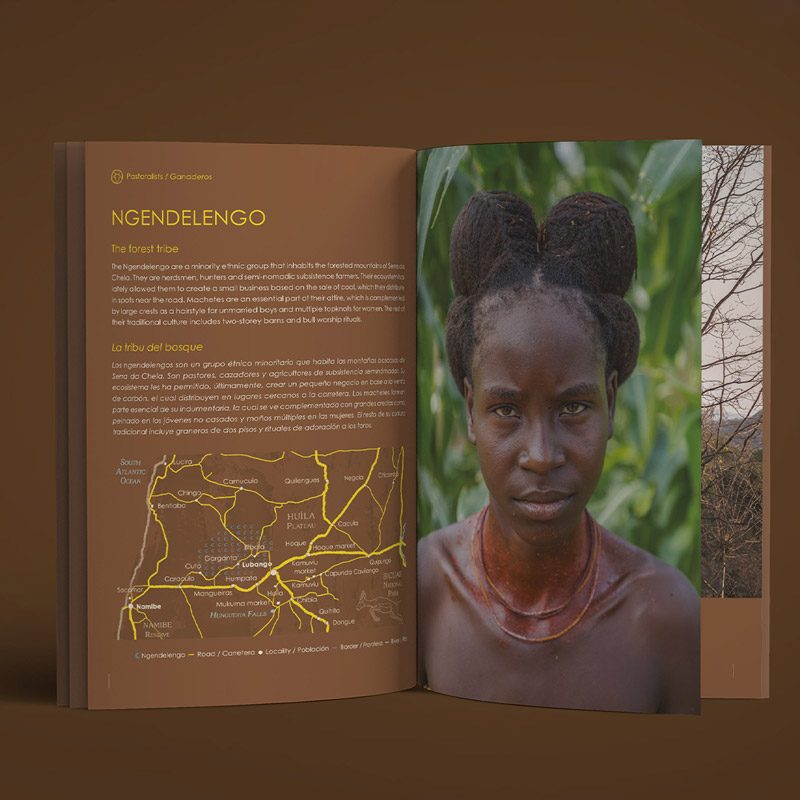
You can learn more about the Dimba tribe of Angola at www.101lasttribes.com
© Photos by Aníbal Bueno taken during a trip to Angola.
